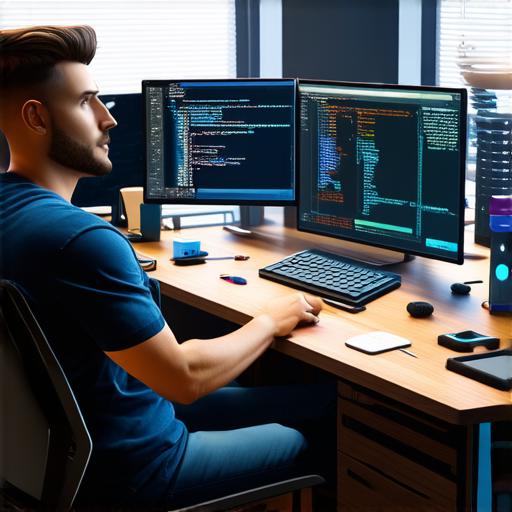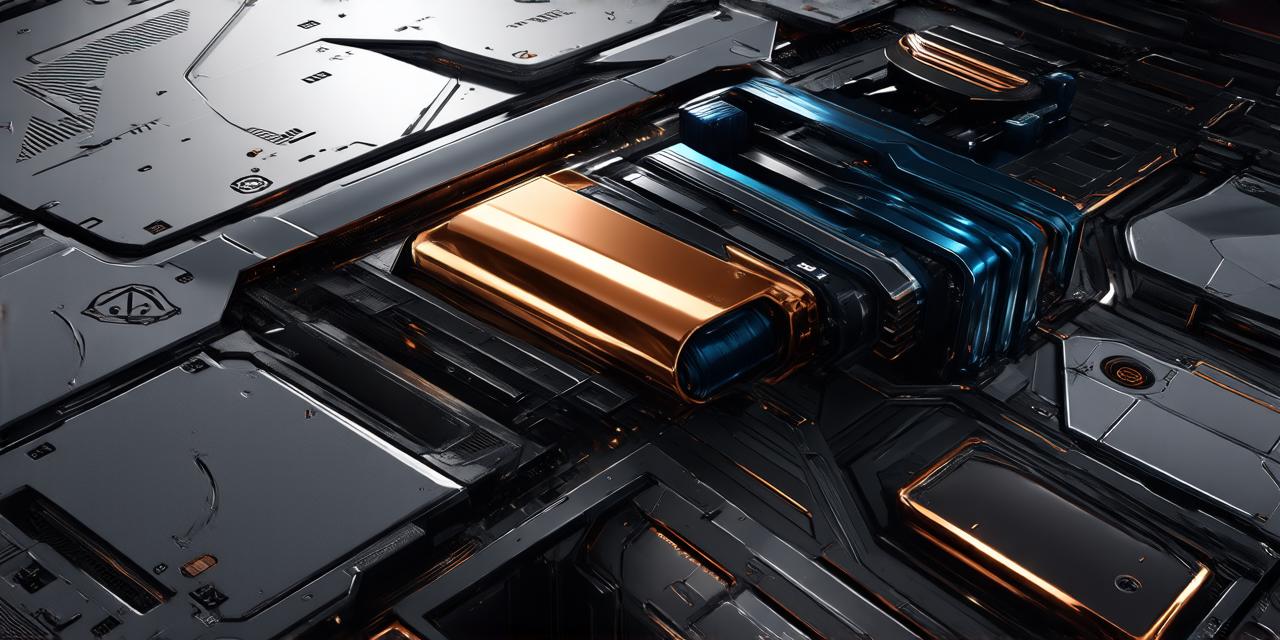Introduction
Unreal Engine (UE) is a widely popular game engine that has been used by developers for creating immersive and interactive games across various platforms. The design phase in game development is a crucial process where the initial ideas and concepts are transformed into a tangible form, including the game mechanics, user interface, and graphics. In this article, we will delve into the design phase of game development with Unreal Engine 5 (UE5), highlighting the tools and features that make it an ideal platform for creating engaging games.
The Design Process in Game Development
The design process in game development is typically divided into several stages, each of which plays a critical role in shaping the final product. The main stages include:
Conceptualization
During this stage, the initial idea for the game is fleshed out, including the setting, characters, and overall narrative. This stage also involves identifying the target audience and determining the game’s unique selling points (USPs).
Prototyping
Prototyping is the process of creating a rough version of the game to test and refine its mechanics, user interface, and graphics. This stage helps developers identify potential issues early on and make necessary changes before investing significant resources in the project.
Pre-Production
During pre-production, developers create detailed designs for the game’s art assets, storyboards, and other materials that will be used throughout the development process. This stage also involves creating a project plan and budget to ensure the project stays on track and within budget.
Production
The production phase is when the actual game development begins. Developers use various tools and features of UE5 to create the game’s art assets, implement the mechanics and user interface, and test and refine the game’s features.
Post-Production
During post-production, developers fine-tune the game’s graphics and sound effects, add any final touches, and conduct thorough testing to ensure the game is bug-free and ready for release.
Tools and Features of UE5 for Game Design
UE5 offers a wide range of tools and features that make it an ideal platform for game design. Some of the most important ones include:
Blueprints
Blueprints are visual programming tools that allow developers to create complex game logic without writing code. With UE5, developers can use blueprints to create custom game mechanics, AI behavior, and user interfaces.
Substance Designer
Substance Designer is a powerful tool for creating detailed textures and materials for the game’s art assets. It offers a wide range of features, including support for physically-based rendering (PBR) and advanced shader nodes.
Unreal Engine Editor
The Unreal Engine Editor is the central hub of UE5, where developers can create and edit all aspects of their game. It includes a range of tools for creating art assets, implementing game mechanics and user interfaces, and testing and refining the game’s features.
Animation Tools
UE5 offers advanced animation tools that allow developers to create realistic character movements and animations. These tools include support for motion capture, skeletal animation, and physics-based animation.

Sound Design Tools
UE5 includes a range of sound design tools, including audio mixing and mastering, that allow developers to create high-quality audio assets for their game.
Case Studies: Real-Life Examples of UE5 in Game Design
There are numerous examples of UE5 being used successfully in game development. Here are a few case studies that demonstrate the power of UE5:
Fortnite
Fortnite is one of the most popular battle royale games in the world, and it was built using UE4. However, the team behind Fortnite has since transitioned to UE5, which has allowed them to create more realistic graphics and add new features to the game.
The Witcher 3: Wild Hunt
The Witcher 3: Wild Hunt is a popular role-playing game that was built using UE4. The team behind the game used UE4’s visual scripting tools to create complex game logic, and they also took advantage of UE4’s advanced animation and physics simulation capabilities to create realistic character movements and interactions.
Minecraft Earth
Minecraft Earth is a mobile augmented reality game that was built using UE5. The team behind the game used UE5’s blueprint-based programming tools to create custom game mechanics, and they also took advantage of UE5’s advanced animation and physics simulation capabilities to create realistic character movements and interactions in the real world.
Best Practices for Navigating the Design Phase with UE5
Here are some best practices for navigating the design phase with UE5:
Start Early
It’s essential to start the design process early on in the development cycle. This will allow you to identify potential issues early on and make necessary changes before investing significant resources in the project.
Use Blueprints
Blueprints are a powerful tool for creating complex game logic without writing code. They can help you create custom game mechanics, AI behavior, and user interfaces quickly and efficiently.
Collaborate with Your Team
Collaboration is essential during the design phase. Ensure that your team members have access to the tools and resources they need to contribute effectively.
Test Early and Often
Testing should be an ongoing process throughout the design phase. This will help you identify potential issues early on and make necessary changes before investing significant resources in the project.
Be Flexible
The design process is often iterative, meaning that you may need to make significant changes to your initial concepts as you progress through the development cycle. Be prepared to pivot if necessary and be open to new ideas and approaches.
Summary
In conclusion, navigating the design phase in game development with UE5 requires a solid understanding of the platform’s tools and features. By following best practices and using real-life examples as inspiration, developers can create engaging and immersive games that captivate their audiences. With its powerful visual scripting tools, advanced animation and physics simulation capabilities, and support for physically-based rendering, UE5 is an ideal platform for game design. So if you’re a Unreal Engine developer looking to take your game to the next level, start exploring UE5 today!
FAQs
- What are blueprints in UE5?
Blueprints are visual programming tools that allow developers to create complex game logic without writing code. With UE5, developers can use blueprints to create custom game mechanics, AI behavior, and user interfaces. - How does Substance Designer work in UE5?
Substance Designer is a powerful tool for creating detailed textures and materials for the game’s art assets. It offers a wide range of features, including support for physically-based rendering (PBR) and advanced shader nodes. - What are some real-life examples of UE5 in game design?
Fortnite, The Witcher 3: Wild Hunt, and Minecraft Earth are all examples of UE5 being used successfully in game development. - How can developers best navigate the design phase with UE5?
To best navigate the design phase with UE5, developers should start early, use blueprints, collaborate with their team, test early and often, and be flexible.



